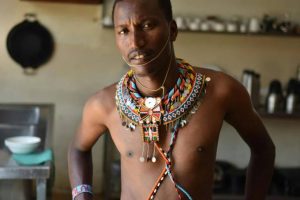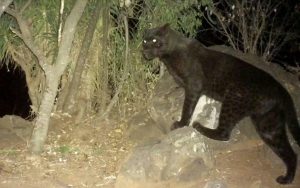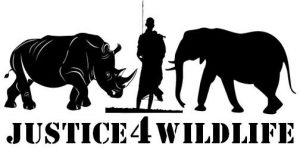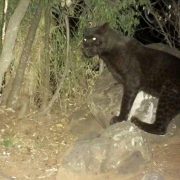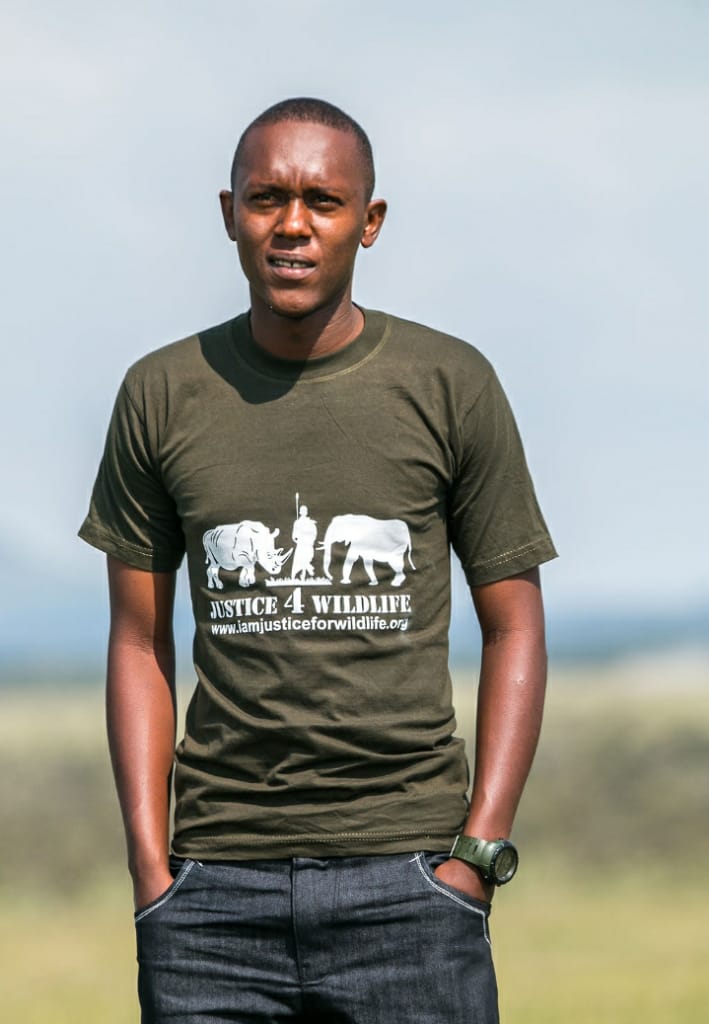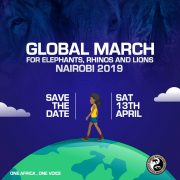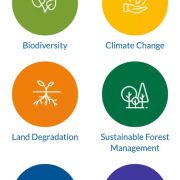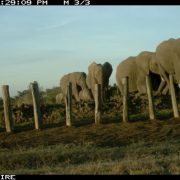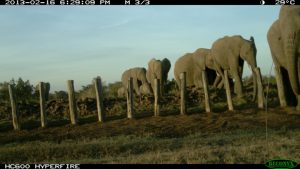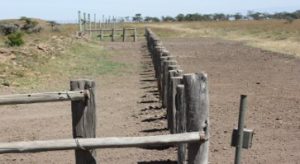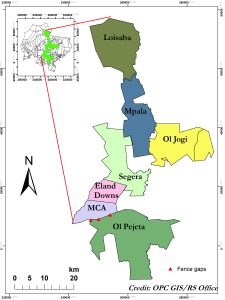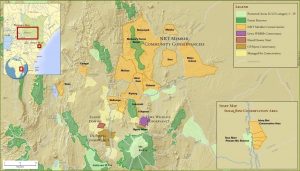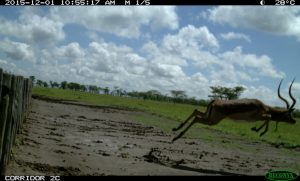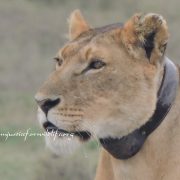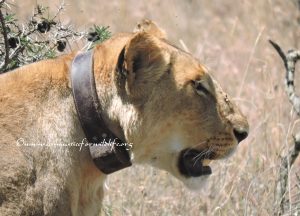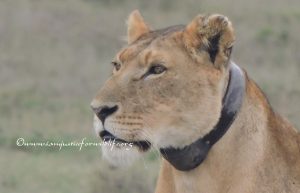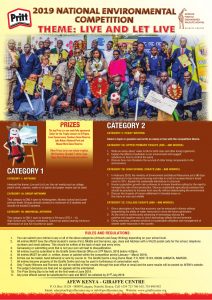CALL FOR PROPOSALS
GEF Small Grants Programme

Introduction
The Global Environment Facility Small Grants Programme (GEF SGP) implemented by UNDP, awards
grants on a competitive basis for initiatives implemented by civil society organizations, to enable them
implement environmental projects while at the same time support poverty reduction and local
empowerment objectives.
In the current 6th phase of GEF, SGP’s geographic focus is in the production land/sea-scapes of (i) the lower
and middle river basin of Lake Bogoria, (ii) the kaya forests in Kilifi county with World Heritage site status
+ a 5km buffer zone surrounding each one, and (iii) the Shimoni-Vanga seascape of Kwale county.
However, the geographic focus is not limited to the 3 areas mentioned above, but is open to the entire
country, for proposals that promote the use of renewable energy technologies for generating income, or
for strengthening partnerships with the private sector.
SGP seeks proposals from the following categories:
1. Projects implemented within a 5km buffer zone radius of the sacred kaya forests in Kilifi county
to address biodiversity conservation, agro-ecological farming, sustainable land management,
community-based eco-enterprises, and sustainable livelihoods.
2. Projects implemented within lower river basin of Lk Bogoria to support biodiversity conservation,
holistic and sustainable grazing, climate-smart agro-ecology, community-based eco-enterprises,
and sustainable livelihoods.
3. Projects implemented within the Shimoni-Vanga seascape to support biodiversity conservation,
implementation of the Joint Co-management Plan, community-based eco-enterprises, and
sustainable livelihoods.
4. Projects implemented to support uptake of renewable energy and energy efficiency technologies
(i) through partnership with private sector and (ii) to increase income generation of local
communities through productive use. These projects are not limited to the geographic focus of
the 3 sites mentioned above.
5. Capacity building of local groups that will include organizational development, governance, financial
management, participatory monitoring, proposal development, use of social media for development
and resource mobilization. Three (3) capacity building grants to be selected; 1 per site.
6. A strategic project that will operate largely at the land/sea-scape level to address an already identified
pertinent issue and work closely with relevant stakeholders including the county
government and private sector
Three strategic projects will be selected; 1 per site.
1. Only proposals from Civil society organizations (CSOs) are awarded funds.
If your organization submitted a proposal in response to the previous Call for Proposals (Sept – Nov 2018), and
has not been notified of a grant award, then consider the application unsuccessful. However, your organization
can re-submit another proposal, but not the same one; a revised version or a completely new proposal will be
acc.
Organizations should select from one of the 6 categories on page 1 and submit one (1) application in response
to this Call.
Background
The GEF Small Grants Programme is a global programme operating in 125 countries that seeks to foster an
enabling environment for addressing global environmental issues and achieving sustainable development
goals. It is managed by a small team in New York, which develops a 4-year strategic framework, to which each
SGP country program aligns its objectives and activities, guided by national priorities. For GEF 6, SGP Kenya is
building on prior experience and lessons of previous phases, to partner with key stakeholders operating at sites
of global importance, to support local initiatives while contributing to national commitments and global
obligations.
SGP is an efficient model for channeling GEF funds to communities, through registered civil society
organizations, for implementation of environmental projects that improve local livelihoods and general wellbeing.
In Kenya, SGP has provided funds to over 400 community-based projects in different parts of the
country. The projects, many of which fall under the GEF focal areas of biodiversity conservation, climate change
mitigation and prevention of land degradation, are selected by a voluntary National Steering Committee (NSC)
comprised of members of civil society, academia, government and donor organizations.
Gender mainstreaming
The Constitution of Kenya 2010 recognizes women as a special group deserving protection. The
Constitution espouses the rights of women as being equal in law to those of men and affirms that
women are entitled to enjoy equal opportunities in the political, social and economic spheres. Despite
the rights-based progressive Constitution that provides a framework for advancing the cause of equality,
according to UN Women, Africa women still face challenges including the ability to participate
effectively in decision making and leadership.
SGP requires that throughout the various stages of the project including conceptualization, planning,
implementation, monitoring and lesson-sharing, gender matters are fully incorporated, to ensure equal
opportunities to participate in, contribute to, and benefit from project resources, activities and results.
Vulnerable groups
Youth groups, groups comprised of persons with disabilities, women groups and groups of indigenous
persons are strongly encouraged to apply.
Grant awards
GEF SGP awards grants only to civil society organizations on a competitive basis. These include national
NGOs, CBOs, development arm of (i) financial institutions and (ii) faith-based organizations. Partnerships
with the private sector, national and county governments, and institutions of higher learning, are highly
encouraged. The following are the grant award levels:
(i) A maximum of USD 30,000 for Community-based organizations; self-help groups, beach management
units
(ii) A maximum of USD 50,000 for organizations that operate at a regional or national level, such as
NGOs, development arm of faith-based organizations,
(iii) A maximum of USD 100,000 for strategic projects implemented by national organizations.
Co-financing
It is a requirement by GEF that applicants demonstrate co-financing. For SGP funded projects, the
requirement is 1:1. i.e. for every dollar requested from GEF SGP, the applicant should be able to raise an
additional dollar. The applicant should show in the proposal the amount of co-financing it will raise (both
cash and in-kind) during the implementation of the project and indicate the source of the co-financing.
Typology of projects
Below are the 6 categories mentioned and that highlight the types of
projects that will be considered for funding. The outcomes and corresponding types of projects were
identified after extensive consultations with key stakeholders at the respective sites.
Note the following:
1) A grant will be awarded to 3 different national NGOs to operate one at each site, to enhance the
capacity of the SGP-funded grantees. These are marked as follows: **
2) Funds are availed for each site to facilitate the implementation of a strategic project by a national
NGO. This is a project that will enhance partnerships between key stakeholders (county government,
local communities, and private sector) and will operate at the land/sea-scape level to address a key
challenge. These are marked as follows: ***
Shimoni-Vanga seascape
Seascape Outcomes
Type of projects
Protection and conservation of critical habitats and biodiversity
1. Integrity of habitats and biodiversity
Improve management of co-management areas within the seascape is enhanced
Support to relevant county policy development processes through
community consultation and awareness creation
2. Livelihoods of communities living around the seascape are strengthened and diversified
Improve and diversify incomes of communities
Enhance community access to climate change economic
opportunities
Promote CSO-private sector ventures for eco-enterprises
Strategic projects are projects that will be implemented by national NGOs as follows: (i) at one of the 3
production landscapes or seascape, in accordance to the description given in tables below under the sub-title
“Typology of projects” and marked as follows; (ii) projects in the climate change mitigation portfolio that
clearly demonstrate innovative partnerships and high levels of CO2 tons of emission avoided.
Support information centers that incorporate local and conventional knowledge
– Knowledge management among different players is enhanced and shared
Capture, document and integrate indigenous knowledge in management of seascape resources
– The capacity of local institutions enhanced
Training of local CSOs on organizational development, governance, financial management, participatory monitoring, proposal development, use of social media for development and resource mobilization.
A specific value chain enhanced in which communities are supported to maximize their role and partnerships along the chain strengthened.
-Social and economic benefits optimized from sustainable use of coastal and marine resources
Lake Bogoria Production landscape
Landscape Outcomes
Type of projects
1. Ecosystem and Biodiversity conservation enhanced
Promote community-based initiatives that improve biodiversity
conservation
Conservation of endangered/threatened species, including those
targeted for charcoal burning
Support to relevant county policy development processes through
community consultation and creation awareness
2. Improved sustainable land management practices
Adoption of agro-ecological principles and practices by local farmers
Promote improved grazing practices
Enhance resilience through diversified food production systems
Rehabilitation of degraded areas
Control and management of invasive floral species
Support to Charcoal Producers Associations (CPAs)
3. Eco-friendly enterprises strengthened
Support to community-driven eco-enterprises through the value chain
approach
Promote joint partnerships with private sector
Facilitate development of new products
Support commercialization and value-addition
4. Conservation of water resources is enhanced
Support conservation and protection of water catchment areas for
fresh water (River Weseges; Majimoto; Emsos)
Initiatives to improve water quality and quantity
Support to WRUAs to effectively deliver on their mandate
Support efficiency and sustainability in irrigation scheme
Training of local CSOs on organizational development, governance,
financial management, participatory monitoring, proposal
4. development, use of social media for development and resource mobilization.
5. The capacity of local institutions enhanced6. Social and economic benefits optimized from sustainable use of natural resources in the landscape
Specific value chains based on natural resources in the landscape e.g prosopis, aloe among others developed
Communities role and partnerships along the chain strengthened
Best practices in value chain development of natural resource-based products documented and shared with County government for further support and upscaling
Policy briefs on government action to support sustainable use of natural resources to economically benefit communities
Production landscape of Sacred Mijikenda Kayas in Kilifi County
Landscape Outcomes
Type of projects
1. Conservation of Kaya Forests, Ecosystem and biodiversity enhanced
Support restoration of traditional cultural conservation practices and systems
Support forest restoration through natural regeneration, enrichment planting and other methods
reduce dependency on Kaya forest resources such as development of alternatives for energy, domestication of medicinal plants, etc
2. Sustainable land management practices adopted.
Support Farmers to adopt agro-ecological principles and practices
Support to communities for diversified food production systems (including traditional crops) to enhance resilience
Documentation of traditional knowledge and practices associated with land management and Natural Resources management.
Promote climate-smart agricultural practices including improvement of water management, harvesting and storage.
Build capacity of community groups/institutions on mining legislations, negotiations for benefit sharing and rehabilitation of mined sites
3. The livelihoods options for Mijikenda kaya forest landscape community significantly enhanced/diversified
Promote partnership with the private sector to enhance financial investments to drive innovation.
Explore product development and marketing of Non-Wood Forest Products,
Support women and youth groups on agro-enterprises development
Training on enterprise development, management and marketing covering production/processing techniques and principles and marketing strategies
4. The capacity of local institutions enhanced
Training of local CSOs on organizational development, governance,
financial management, participatory monitoring, proposal development, use of social media for development and resource mobilization.
5. The resilience of community enhanced
A climate-smart agriculture project that will focus on: against adverse impacts of climate change and land
degradation
Introducing and re-introducing orphaned drought-resistant crops, on-farm rainwater harvesting technologies and Integrated Agroforestry practices including (Fruit trees and fast-growing tree species)
Climate Change Mitigation Portfolio Portfolio Outcomes
Type of projects Strengthened partnerships with private sector for increased uptake of renewable energy (RE) or energy efficiency (EE) technologies
Provide sustainable, affordable alternatives to charcoal and kerosene for cooking for low income urban households e.g. bio-ethanol, carbonized briquettes, pellets, biogas
Support the establishment of mini/micro-grids and/or policy initiatives that create a more suitable environment for private sector participation in mini/micro-grids. Applicants should demonstrate that community and key stakeholder engagement (e.g. county/local government and Energy Regulatory Commission as applicable) and detailed site assessments have already been undertaken
Support the distribution and sale of low cost off-grid lighting products (single light or single light with phone charging) in new and challenging markets e.g. remote, un-served households in arid and semi-arid areas
Adoption of renewable energy technologies (RETs) for productive use and increased income generation
Support the use of solar PV (or other RE based solutions) for on-grid and off-grid water pumping applications for water service provision and agriculture (i.e. irrigation or livestock watering)
Support the engagement of vulnerable groups; such as persons with disabilities, youth and children-headed households with opportunities to engage in renewable-energy enterprises
Promote use of RETs for community eco-friendly enterprises, such as eco-tourism, bee-keeping, etc as well as for value addition.
The purpose of the private sector–CSO partnership is to take advantage of the combined but differentiated
strengths and capabilities of both, to expand the number of households that will benefit from low carbon
emission systems. Although the proposal will be submitted by the CSO, it will be jointly developed, and will
highlight the market barriers that the partnership will address. A well thought-out, written and signed
agreement between the CSO and the private sector should accompany the proposal. The proposal should
indicate the number of households targeted and provide an estimate of the metric tons of CO2e that will be
avoided.
Among the key elements to address related to market barriers are:
Awareness and acceptability – providing information to customers that facilitate making
informed purchases e.g. information on economics (e.g. cost saving potential), health
(e.g. reducing indoor air pollution), safety (e.g. reducing risk of fire or burns), quality of
service (e.g. brighter light output, reduced time for preparation of meals) and other
additional non-financial benefits
Access – developing sales and distribution networks and/or expanding into new unserved
or underserved areas
Affordability – developing and implementing innovative consumer financing models that
target low income households or developing and implementing smart subsidies (proof
must be provided that these subsidies would not result in market distortion and the
market growth can continue after removal of the subsidy)
o After-sale service – provide training to persons who may carry out various levels of
after-sale service, from simple to complicated tasks.
Points to NOTE:
1. Proposals that request for funding to engage in income generating activities and entrepreneurship,
should take into consideration the value chain approach and demonstrate linkages with relevant
partners.
2. Every proposal that has a business component (e.g. eco-enterprises and income generating projects)
is expected to develop a simple business plan and submit it together with the proposal.
3. Any organization that has been in operation for less than 2 years is not eligible for funding.
4. Proposals that demonstrate linkages and collaboration to address the same or related issue within
the same landscape (Bogoria or kaya) or seascape (shimoni-vanga) will be at an advantage.
5. Organizations are strongly encouraged to liaise with the SGP competitively-selected strategic
partners, during proposal development, and during implementation. The strategic partner for lake
Bogoria is the Kenya Organic Agricultural Network (KOAN), the partner for kaya forests is the WWF
Kenya and for Shimoni Vanga it is COMRED.
The role of the strategic partners is to coordinate activities at each land/sea-scape to reduce duplication, to
enhance synergy and to support collaboration among key stakeholders. The email address for KOAN is
info@koan.co.ke; the email address for COMRED is sgp.cfp@comred.or.ke and the email address for WWF Kenya
is ekimaru@wwfkenya.org
Grant awards
GEF SGP will award grants on a competitive basis only to local civil society organizations (CSOs), registered and in operation for more than 2 years. The grant award levels are 3; they range from a maximum of USD 30,000 to a maximum USD 100,000.
Submission of proposals
All proposals must be developed using the GEF SGP proposal guidelines template, available at
www.sgp.undp.org and should reach the following email address bids.ke@undp.org with a copy
to salomen@unops.org no later than March 10th 2019. Only 1 application per organization will be accepted. For enquiries and clarifications, send an email to salomen@unops.org
Additional information
Kindly visit the Kenya page under the SGP global website found at www.sgp.undp.org, and check the full contents of the Call for Proposals (CfP) under the Documents folder.
“For most of history, man has had to fight nature to survive. In this century he has to realize that in order to survive he has to protect it.” Jacques-Yves Cousteau Here we celebrate the unsung wildlife heroes in the grassroots doing remarkable work to conserve our wildlife heritage, Get to learn about wildlife from a ranger/ ecologist in Kenya a freelance eco-traveler, experience the diverse cultures and African heritage from the natives and take an adventure to new destinations to learn about rare attractions that are hardly talked about and to top it all up some of the best wildlife photographs that will make you reconnect to your wild side appreciate everything around us and fall in love with the natural world, because “It is not enough to love the natural world; the point is to defend and preserve it.” Edward Abbey
Our wildlife, our responsibility. When it comes to standing up for our wildlife it’s better to be outspoken than unspoken.
